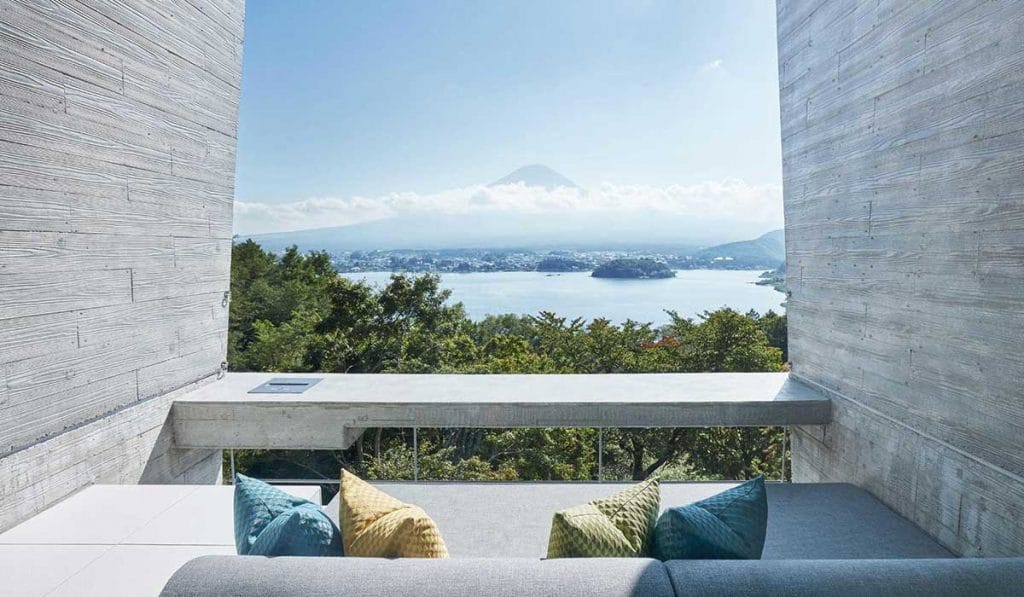In our frenetic lives, in our over-built environments, with too many screens and too little time, many of us yearn to escape, at least for a little while, to somewhere serene. We long to be at peace, surrounded by nature, under a big open sky that gives plenty of space for the mind to relax and the heart to remember what’s really important in life.
But, while we want to reconnect with our simpler selves, not all of us want to simplify our accommodation all that much. Luckily for today’s traveller, the growing number of luxury cabins around the world – a selection of which is featured in the following pages – offers a solution: Immerse yourself in the healing power of nature, and retire to a beautifully designed space with Egyptian cotton sheets when you’re done.
“We often talk about holidays as a chance to escape the norm and, for many, that norm involves regular interaction with people, familiar surroundings and a reliance on technology,†says Matt Rushbrooke, head of product for UK-based bespoke tour operator Inspiring Travel Company.
“Luxury cabins are the perfect path to such an escape – guests can truly disconnect and relax in exceptional comfort. There’s a real pleasure and a restorative energy in rediscovering the beauty of the wilderness – seeing the stars at night, waking up to the sounds of nature instead of traffic, and simply breathing clean air. These most simple of things can feel like a real luxury when they’re ‘out of the ordinary’ for travellers.â€
Luxury cabins are popping up at extraordinary sites across the world, from Japan to Sweden, Australia to the Americas. Even 3,000m up on the Tibetan Plateau, you can now sit on the patio of your wood cabin, sip a barley wine and honey cocktail just mixed up by the camp bartender, and watch the light change over the grasslands.
“Norden cabins are surrounded by nature,†says Dechen Yechi, who runs the camp with her husband, Yidam Kyap. “You can sit in your room and hear the birds chirping outside; in early summer, birds nest in the bushes surrounding the cabins. You might also see the occasional mother duck and baby ducklings waddling to or from the river. At Norden, you’re reconnected with nature in its true and untouched form.â€
Dechen says it was a challenge to set Norden up “here in the middle of nowhereâ€. To make the cabins, of which there are seven, they turned to local carpenters that make the wooden frameworks of traditional Tibetan houses. The cabins were built in a yard in a neighbouring town where electricity is available, then taken to the camp and assembled on site.
The cabins have wooden floors and are beautifully appointed, with traditional-style furniture and local antiques. Beds have custom-made felt blankets. Wood-burning stoves keep the cabins toasty, but for guests wanting to warm up even further, the camp also has a sauna.
They chose the Sangke grasslands in Tibet’s Amdo region for the location of Norden, as it’s the homeland of Yidam’s mother.
“This part of the grasslands has always been special to Yidam, especially with its proximity to the Labrang monastery, where Yidam’s older brother is a monk,†says Dechen. “The monastery is the spiritual centre for local Tibetans and, so, this site is ideal for visitors to experience both the grasslands and the monastery.â€
But your escape into nature doesn’t have to be quite so remote or elevated. Hoshinoya Fuji in Japan is located on the pine-covered slope of a hill north of Lake Kawaguchi, about two and a half hours from Tokyo. The minimalist cabins have been designed to maximise the feeling of being in nature, as well as the stunning views of Mount Fuji across the water. Each cabin has a giant window facing the lake and, as the cabin’s interior is minimally decorated, the view floods into the room unhindered. In front of each cabin is a large patio with a fireplace and daybed, enticing guests to spend time outdoors.
When guests feel ready to leave the privacy of their cabin, they can head to the resort’s Cloud Terrace, a playing field where they can try various outdoor activities.
“Our Glamping Master, who really knows how to enjoy the outdoors, guides guests in taking part in our 15 or so activities,†says Syouji Matsuno, general manager of Hoshinoya Fuji. “Guests love learning how to chop wood and doing aerial stretching in the forest – these are very simple but popular activities.â€
Matsuno says that while 70 per cent of his guests have traditionally been Japanese, the number of international travellers staying at the resort has risen since Mount Fuji was named a Unesco World Heritage Site five years ago. In a sharp rise, about half of his guests were from foreign countries this April.
Most of these visitors are from East Asia, including China, Taiwan and South Korea. The number of guests from Thailand and Singapore is also increasing, as well as guests from Western countries.
Matsuno says that the appeal of luxury cabins is universal. “In modern society, with civilisation evolving and getting more complicated every day, people carry so many stresses. We are starting to lose our bond with nature, and the ability to meaningfully communicate with our family and friends,†he says. “Many of our guests are looking to once again feel connected to other people and with nature.â€
Sometimes, you just have to get away to get back in touch.




